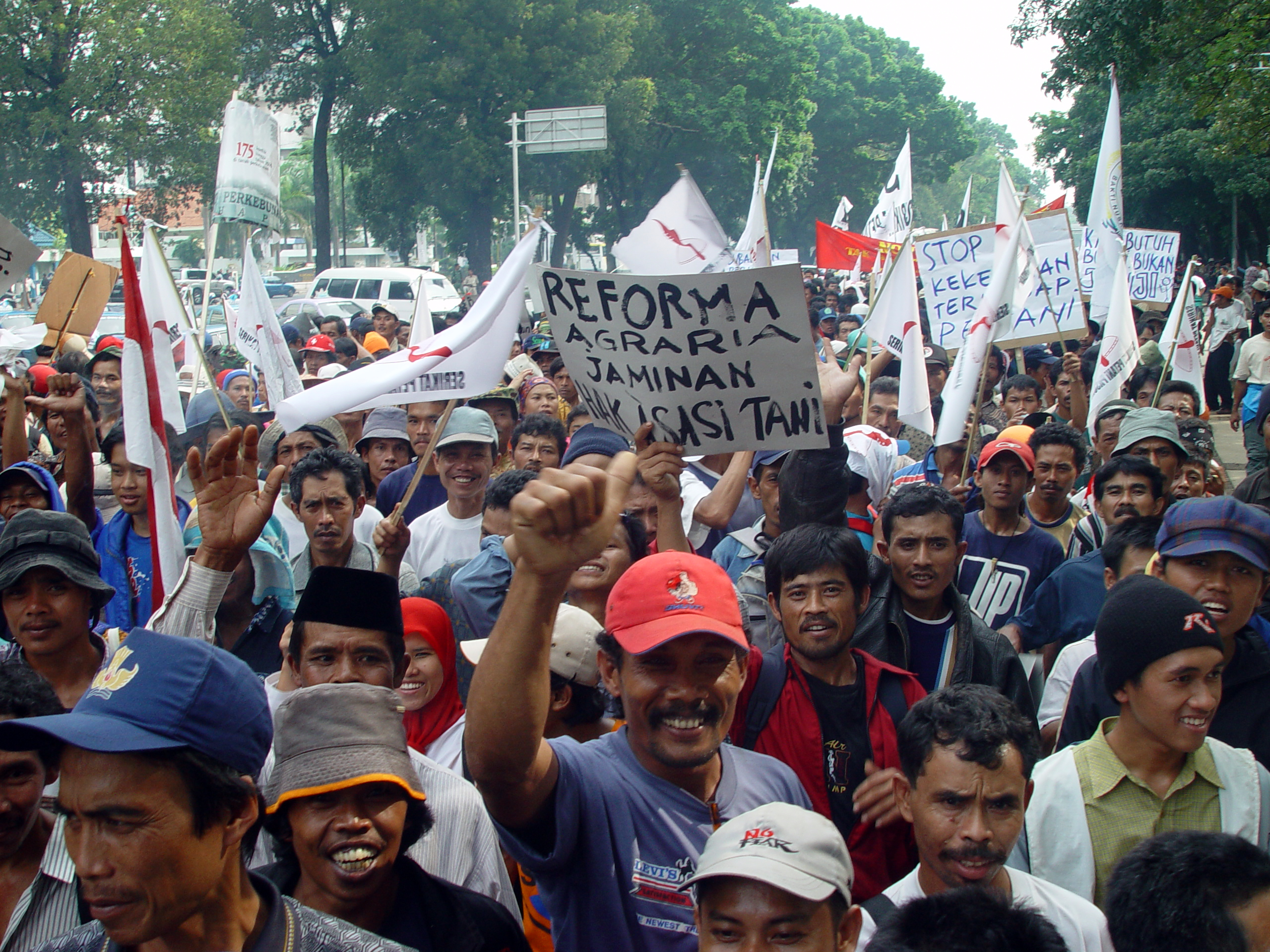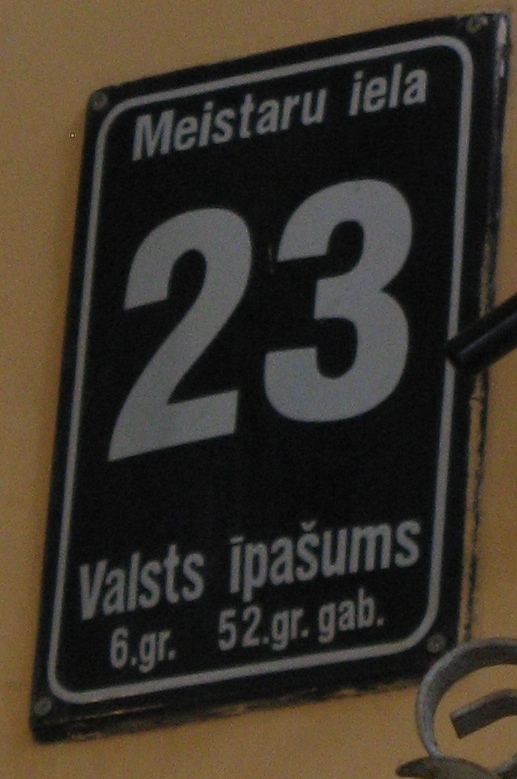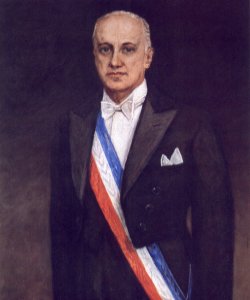|
Land Reform In Chile
The Chilean land reform ( es, Reforma agraria chilena) was a process of land ownership restructuring that occurred from 1962 to 1973 in different phases. For much of the 20th century agriculture was one of the most backward sectors of Chilean economy. The land reform was initially supported by Chilean right, centre and left political parties plus the Catholic Church and the United States. After the 1973 Chilean coup d'état the ruling right-wing dictatorship initiated a counter-reform that reverted part of it and directed Chilean agriculture into a "neoliberal" model. Pre-reform developments Chilean intellectuals like Camilo Vial (1804-1882) had placed no particular emphasis on agriculture for the development of Chile while others like Francisco Encina (1874-1965) considered Chilean agriculture irrelevant for economic and social development.Naranjo, Eduardo. 1997. ''Den Auktoritära Staten och Ekonomisk Utveckling i Chile'', University of Lund PhD thesis. p. 118-119. Encina cons ... [...More Info...] [...Related Items...] OR: [Wikipedia] [Google] [Baidu] |
Land Reform
Land reform is a form of agrarian reform involving the changing of laws, regulations, or customs regarding land ownership. Land reform may consist of a government-initiated or government-backed property redistribution, generally of agricultural land. Land reform can, therefore, refer to transfer of ownership from the more powerful to the less powerful, such as from a relatively small number of wealthy or noble owners with extensive land holdings (e.g., plantations, large ranches, or agribusiness plots) to individual ownership by those who work the land. Such transfers of ownership may be with or without compensation; compensation may vary from token amounts to the full value of the land. Land reform may also entail the transfer of land from individual ownership—even peasant ownership in smallholdings—to government-owned collective farms; it has also, in other times and places, referred to the exact opposite: division of government-owned collective farms into smallholdings. Th ... [...More Info...] [...Related Items...] OR: [Wikipedia] [Google] [Baidu] |
State Ownership
State ownership, also called government ownership and public ownership, is the ownership of an industry, asset, or enterprise by the state or a public body representing a community, as opposed to an individual or private party. Public ownership specifically refers to industries selling goods and services to consumers and differs from public goods and government services financed out of a government's general budget. Public ownership can take place at the national, regional, local, or municipal levels of government; or can refer to non-governmental public ownership vested in autonomous public enterprises. Public ownership is one of the three major forms of property ownership, differentiated from private, collective/cooperative, and common ownership. In market-based economies, state-owned assets are often managed and operated as joint-stock corporations with a government owning all or a controlling stake of the company's shares. This form is often referred to as a state-owne ... [...More Info...] [...Related Items...] OR: [Wikipedia] [Google] [Baidu] |
Jorge Alessandri
Jorge Eduardo Alessandri Rodríguez (; 19 May 1896 – 31 August 1986) was the 27th President of Chile from 1958 to 1964, and was the candidate of the Chilean right in the crucial presidential election of 1970, which he lost to Salvador Allende. He was the son of Arturo Alessandri, who was president from 1920 to 1925 and again from 1932 to 1938. Early years Jorge Alessandri was born in Santiago. He studied at Instituto Nacional General José Miguel Carrera, prestigious public high school of Santiago, and University of Chile, and after graduating in 1919 worked there as a lecturer. After the fall of the parliamentary republic, he lived in European exile with his parents from 1924 to 1925, but returned to his native land where he was elected to parliament as an independent from a Santiago constituency in 1926. He withdrew from public life in 1932 to concentrate on business interests, becoming president of the mortgage bank, ''Caja de Crédito Hipotecario'' until 1938 and run ... [...More Info...] [...Related Items...] OR: [Wikipedia] [Google] [Baidu] |
Sugar Refinery
A sugar refinery is a refinery which processes raw sugar from cane or beets into white refined sugar. Many cane sugar mills produce raw sugar, which is sugar that still contains molasses, giving it more colour (and impurities) than the white sugar which is normally consumed in households and used as an ingredient in soft drinks and foods. While cane sugar does not need refining to be palatable, sugar from sugar beet is almost always refined to remove the strong, usually unwanted, taste of beets from it. The refined sugar produced is more than 99 percent pure sucrose. Many sugar mills only operate during the harvest season, whereas refineries may work the year round. Sugar beet refineries tend to have shorter periods when they process beet than cane refineries, but may store intermediate product and process it in the off-season. Raw sugar is either processed and sold locally, or is exported and refined elsewhere. History Sugar refineries date back to Arab Egypt in the 12th ... [...More Info...] [...Related Items...] OR: [Wikipedia] [Google] [Baidu] |
Slaughterhouse
A slaughterhouse, also called abattoir (), is a facility where animals are slaughtered to provide food. Slaughterhouses supply meat, which then becomes the responsibility of a packaging facility. Slaughterhouses that produce meat that is not intended for human consumption are sometimes referred to as ''knacker's yards'' or ''knackeries''. This is where animals are slaughtered that are not fit for human consumption or that can no longer work on a farm, such as retired work horses. Slaughtering animals on a large scale poses significant issues in terms of logistics, animal welfare, and the environment, and the process must meet public health requirements. Due to public aversion in different cultures, determining where to build slaughterhouses is also a matter of some consideration. Frequently, animal rights groups raise concerns about the methods of transport to and from slaughterhouses, preparation prior to slaughter, animal herding, and the killing itself. History Unti ... [...More Info...] [...Related Items...] OR: [Wikipedia] [Google] [Baidu] |
Refrigeration
The term refrigeration refers to the process of removing heat from an enclosed space or substance for the purpose of lowering the temperature.International Dictionary of Refrigeration, http://dictionary.iifiir.org/search.phpASHRAE Terminology, https://www.ashrae.org/technical-resources/free-resources/ashrae-terminology Refrigeration can be considered an artificial, or human-made, cooling method. Refrigeration refers to the process by which energy, in the form of heat, is removed from a low-temperature medium and transferred to a high-temperature medium. This work of energy transfer is traditionally driven by mechanical means, but can also be driven by heat, magnetism, electricity, laser, or other means. Refrigeration has many applications, including household refrigerators, industrial freezers, cryogenics, and air conditioning. Heat pumps may use the heat output of the refrigeration process, and also may be designed to be reversible, but are otherwise similar to air conditioning ... [...More Info...] [...Related Items...] OR: [Wikipedia] [Google] [Baidu] |
Dairy
A dairy is a business enterprise established for the harvesting or processing (or both) of animal milk – mostly from cows or buffaloes, but also from goats, sheep, horses, or camels – for human consumption. A dairy is typically located on a dedicated dairy farm and milk or in a section of a multi-purpose farm (mixed farm) that is concerned with the harvesting of milk. As an attributive, the word ''dairy'' refers to milk-based products, derivatives and processes, and the animals and workers involved in their production: for example dairy cattle, dairy goat. A dairy farm produces milk and a dairy factory processes it into a variety of dairy products. These establishments constitute the global dairy industry, part of the food industry. Terminology Terminology differs between countries. In the United States, for example, an entire dairy farm is commonly called a "dairy". The building or farm area where milk is harvested from the cow is often called a "milking parlor" or "parl ... [...More Info...] [...Related Items...] OR: [Wikipedia] [Google] [Baidu] |
CORFO
The Production Development Corporation (CORFO, from es, Corporación de Fomento de la Producción de Chile) is a Chilean governmental organization that was founded in 1939 by President Pedro Aguirre Cerda to promote economic growth in Chile. Originally, CORFO was responsible for the creation of basic industries during the Presidential Republic Era, namely oil, power, steel, sugar, transportation among many others (see Economy of Chile). CORFO oversees a variety of programs aimed at generating the economic development of Chile, through the promotion of inward investment and the advocacy of competitiveness In economics, competition is a scenario where different economic firmsThis article follows the general economic convention of referring to all actors as firms; examples in include individuals and brands or divisions within the same (legal) firm ... for domestic companies. CORFO’s main areas are Quality and Productivity, Innovation and Investment Promotion. References ... [...More Info...] [...Related Items...] OR: [Wikipedia] [Google] [Baidu] |
Latifundio–minifundio Land Tenure Structure
The land tenure of Latin America is called the 'Latifundio–minifundio' structure. This dualistic tenure system is characterized by relatively few large commercial estates known as latifundios, which are over 500 hectares and numerous small properties known as minifundios, which are under 5 hectares. Minifundios are mainly subsistence-oriented smallholdings and are generally farmed by peasant households. Latifundios relied mainly on peonage, which is a form of unfree labour or wage labor in which a laborer (peon) has little control over employment conditions, with features of feudal serfdom Serfdom was the status of many peasants under feudalism, specifically relating to manorialism, and similar systems. It was a condition of debt bondage and indentured servitude with similarities to and differences from slavery, which develop .... References Agricultural economics {{agri-stub ... [...More Info...] [...Related Items...] OR: [Wikipedia] [Google] [Baidu] |
Eduardo Frei Montalva
Eduardo Nicanor Frei Montalva (; 16 January 1911 – 22 January 1982) was a Chilean political leader. In his long political career, he was Minister of Public Works, president of his Christian Democratic Party, senator, President of the Senate, and the 27th president of Chile from 1964 to 1970. His eldest son, Eduardo Frei Ruiz-Tagle, also became president of Chile (1994–2000). Frei's Christian Democratic Party supported the Armed Forces intervention to remove his successor Salvador Allende from office in 1973, after the Chamber of Deputies, on 22 August 1973, accused Allende of violating the Constitution. He was later a vocal opponent of the Augusto Pinochet regime. On 22 January 1982, Frei died in Santiago, Chile, following surgery. Assassination was suspected by some but has never been proven. Early life Eduardo Frei Montalva was born in Santiago on 16 January 1911, the son of Eduard Frei Schlinz, a Swiss-born ethnic German from Austria, and Victoria Montalva Ma ... [...More Info...] [...Related Items...] OR: [Wikipedia] [Google] [Baidu] |








